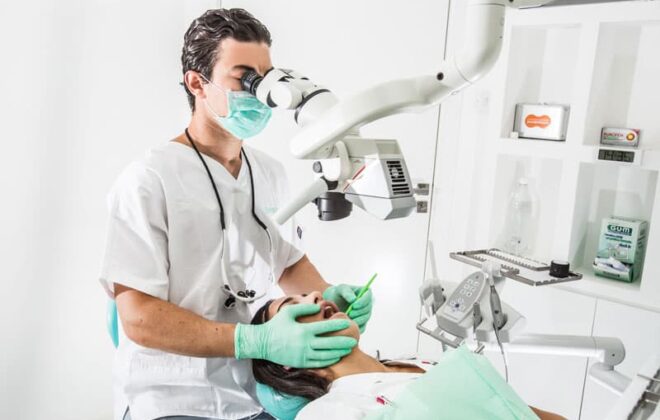Everything You Need to Know About Throbbing Tooth Pain
There are many possible causes of throbbing tooth pain, and the cause will determine the treatment options.
Dental appliances
New or recently adjusted dental appliances, especially braces or orthodontic headgear, slowly move the teeth. This movement can cause pain and feelings of pressure. A person may feel throbbing throughout the mouth or in a specific area.
This pain is not dangerous, and it is not typically a sign that something is seriously wrong.
A person can usually manage the pain with over-the-counter (OTC) pain relievers, such as ibuprofen.
However, if the pain is unbearable or does not improve in a few days, a person should see their orthodontist.
Caries and cavities
Dental caries refers to decay in the teeth. Significant decay can cause cavities, which are holes or pits in the teeth.
While some very severe cavities may cause visible holes, it is not always possible to see tooth decay. A throbbing tooth may be a sign that decay has damaged the tooth enough to injure the nerve and cause pain.
A dentist can treat caries and cavities, with the extent of the damage determining the precise treatment. Sometimes, a filling will suffice, but for more severe damage, a person may need a root canal, tooth extraction, or other procedure.
Dental infections
An infection in the tooth or gums can cause throbbing pain, as well as other symptoms, including swelling in the face or mouth.
These infections usually appear when a person does not seek treatment for a severe cavity, but they can also happen following oral surgery or injuries to the mouth. Dental infections may grow or spread, so they require prompt treatment.
In most cases, a person will need antibiotics, as well as treatment for the underlying cause. They might require a root canal, tooth removal, oral surgery, or other treatment.
OTC pain relievers may help while a person awaits care. However, a person should see a dentist as quickly as they can — ideally, within a day or two.
Injuries to the teeth or face
An injury to the teeth or face can break or crack the teeth. This injury could occur as a result of a sports-related incident or accident.
These injuries may not always be visible, particularly if the tooth breaks below the gumline. The pain may be severe, and a person may notice swelling. Without treatment, injuries may lead to infections.
Sometimes, a broken filling causes pain. A sudden blow to the face or mouth can break a filling, but fillings may also break with time.
It is important to see a dentist or doctor right away following a blow to the mouth or face. A person may have a broken bone that requires treatment, broken teeth that need repairing, or other injuries.
Gum disease
Gum disease causes inflammation and pain in and around the gums. While infections can cause gum disease, plaque buildup is the most common cause. People with gum disease may have gum pain, throbbing teeth, or bleeding gums.
The treatment of gum disease involves removing plaque and tartar before adopting better oral hygiene practices, including frequent tooth brushing and flossing. A medicated mouthwash may help ease inflammation.
Weak enamel
When enamel — which forms the outer layer of the teeth — wears down, it can cause the teeth to be sensitive, especially to cold or heat. A person may also notice stinging or throbbing pain.
Avoiding triggers can help, and some people find relief from toothpaste that manufacturers have created specifically for sensitive teeth. However, it is important to see a dentist to treat the underlying enamel damage.
Treatment might involve having a filling or crown or sealing the tooth.
Sinusitis
Sinusitis is inflammation of the sinuses, which are the airways behind the nose. There are many potential causes, including infection, allergies, and autoimmune reactions.
The symptoms are similar to those of the common cold and include nasal discharge, a blocked nose, headaches, and toothache. Sinusitis may cause a range of dental issues, including throbbing tooth pain.
The cause will determine the treatment options, which include antibiotics, surgery, and lifestyle changes.
Erupted or impacted wisdom teeth
The wisdom teeth are in the back of the mouth and may emerge during adulthood. This emergence can cause throbbing tooth pain.
Impacted wisdom teeth may grow at the wrong angle, affecting nearby teeth and causing discomfort.
Pain relief medication can ease the symptoms, but surgical removal of the wisdom tooth may be necessary in some cases.
Bruxism (teeth grinding)
Bruxism, or grinding of the teeth, is a common condition that may cause throbbing tooth pain.
A person with bruxism may clench their jaw and grind their teeth together, either when awake or during sleep. There are many possible causes.
A primary treatment for bruxism is wearing a mouthguard.
Referred pain
Referred pain happens when a person feels pain in another part of the body due to an injury elsewhere. For example, a person with tense jaw or neck muscles may feel throbbing in the mouth.
In some cases, a person may be able to find the source of the pain by pressing on nearby muscles to see whether that causes pain in the mouth. If it does, a muscle injury may be responsible for the oral pain.
The treatment options will depend on the cause of the pain.
Shingles
Herpes zoster is a virus that causes an infection called shingles, which is a painful rash that can last days to weeks. People can get shingles after having chickenpox. Older people and those with a weak immune system are more vulnerable.
It is possible, but very rare, to get a shingles infection in the mouth. This infection can cause throbbing pain, which usually appears before a rash. The rash typically affects just one side of the mouth.
Pain relief medication can help manage shingles. Antiviral medications may also help, but shingles is not curable.
A person who thinks that they may be experiencing shingles should see a doctor.
People who believe that their throbbing tooth pain is due to a minor injury can delay seeing a dentist and see whether the symptoms get better.
However, if a person cannot determine the reason for the pain, or it does not go away, it is important to see a dentist as soon as possible.
Very rarely, dental infections can spread to other areas of the body, causing a serious and potentially life threatening infection.
Going to the emergency room or seeking urgent care is necessary if a person:
- develops a fever
- has a swollen face
- has trouble swallowing or breathing
- seems confused or loses consciousness
Throbbing tooth pain is a sign that something is wrong in or near the mouth. Even if the pain does not get worse, it is important to see a dentist to diagnose and treat the cause.
Early treatment can prevent serious infections and severe health issues, such as an infection that spreads to other areas of the body.
Article originally appeared at: https://www.medicalnewstoday.com/



